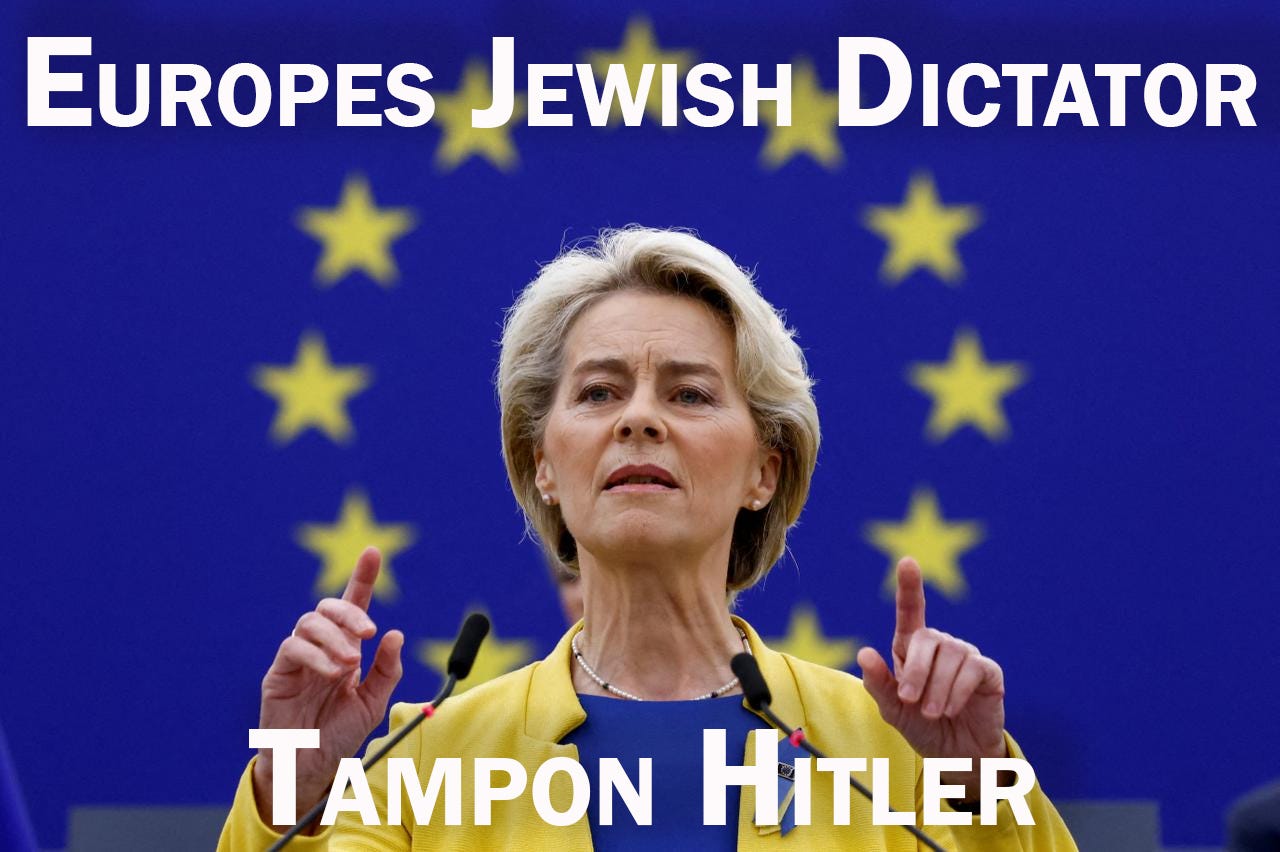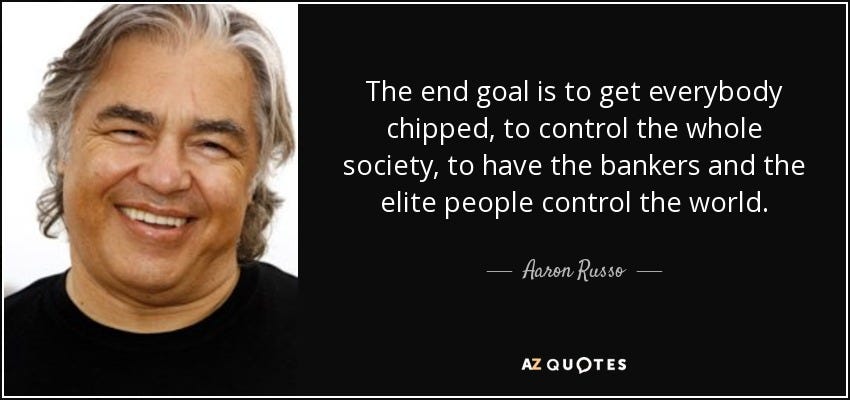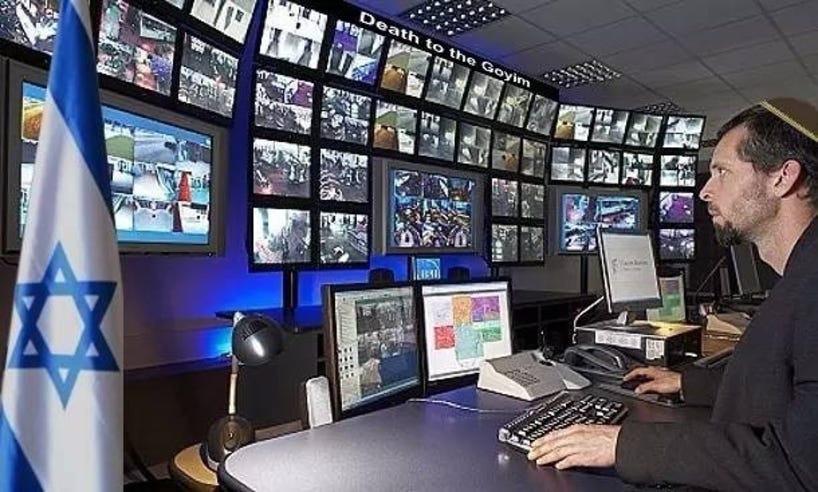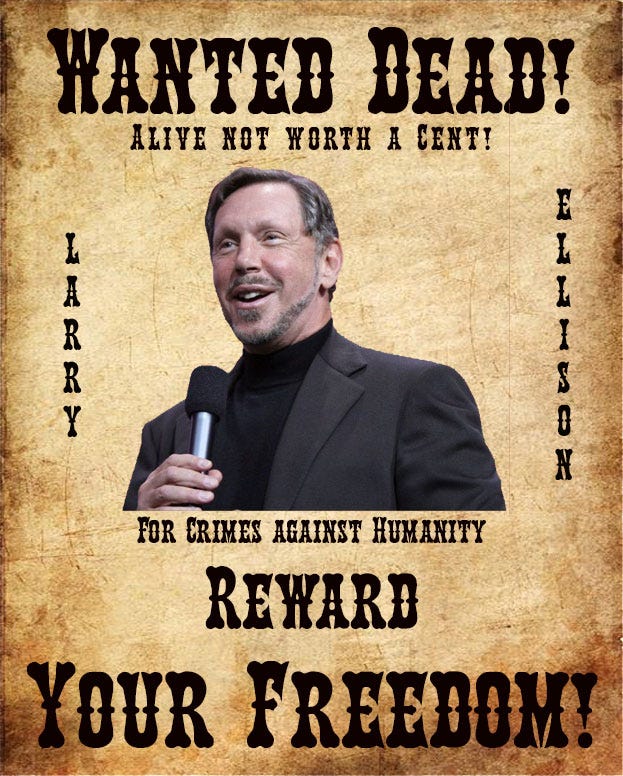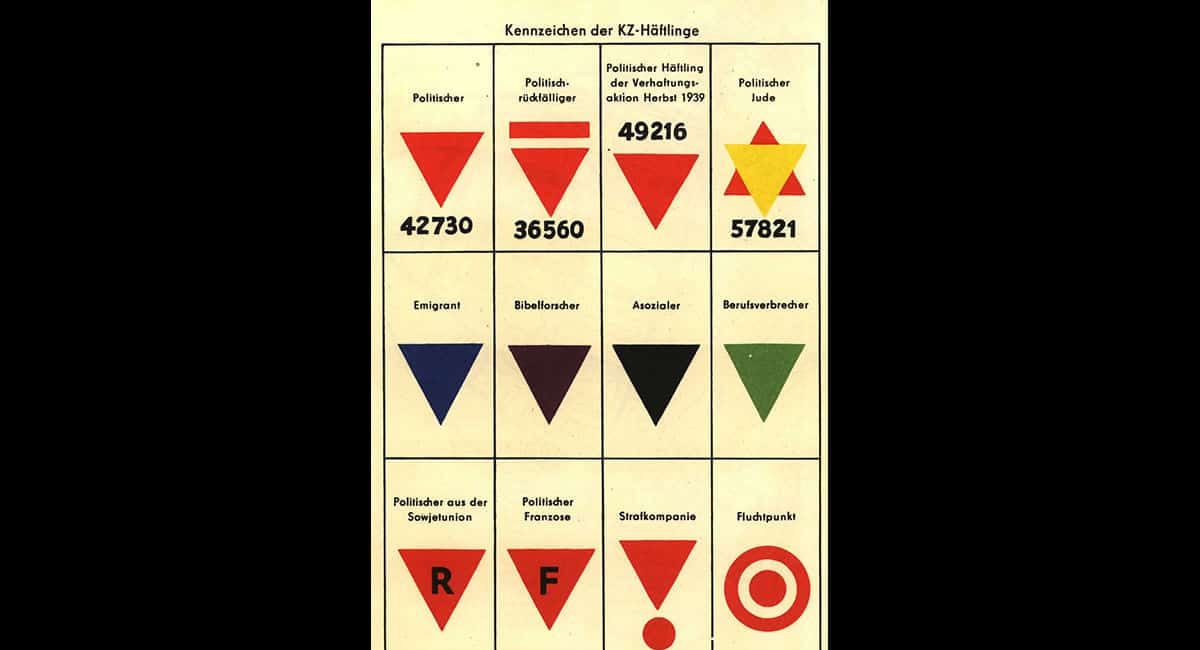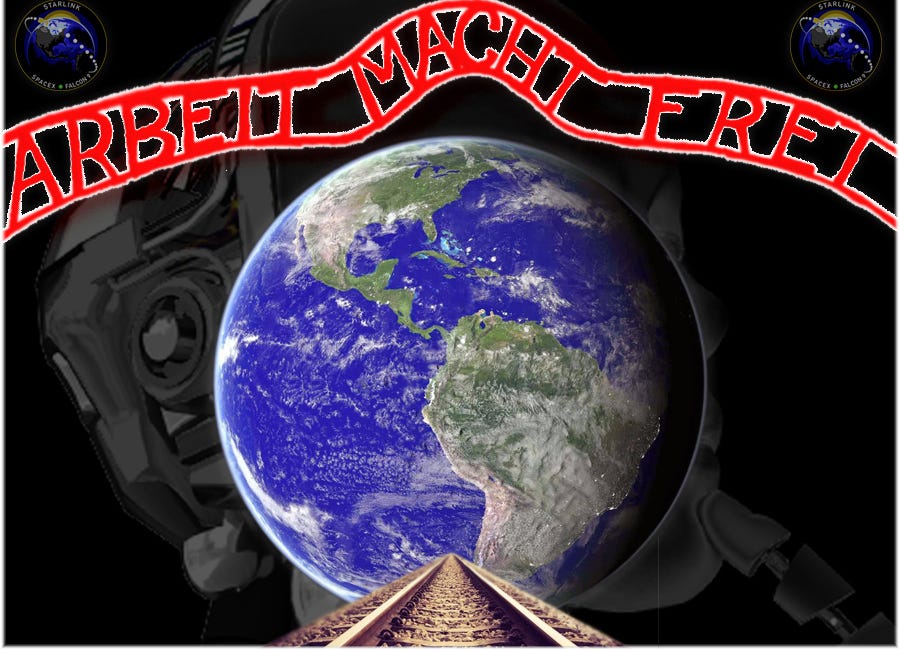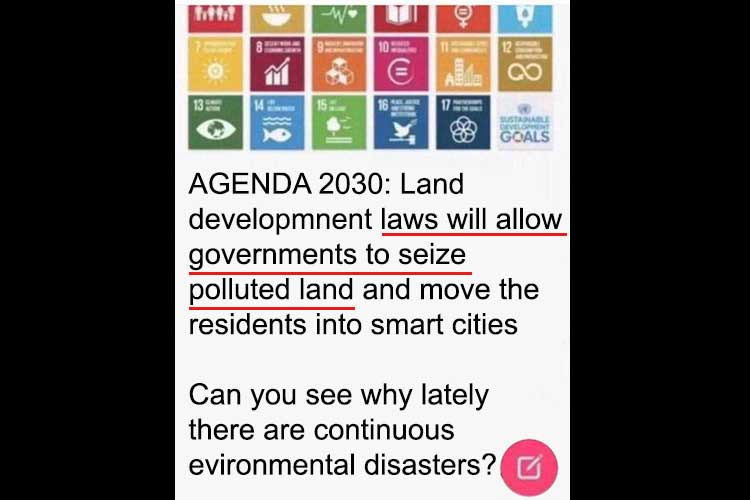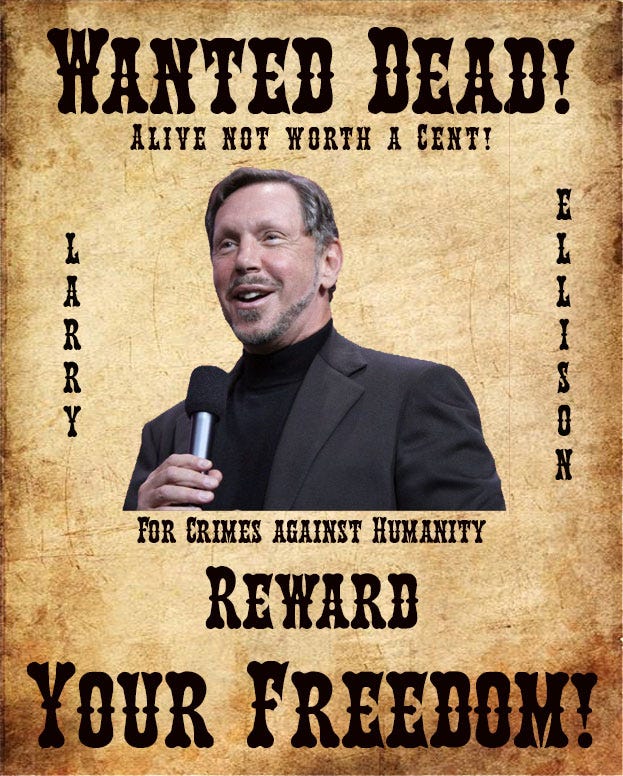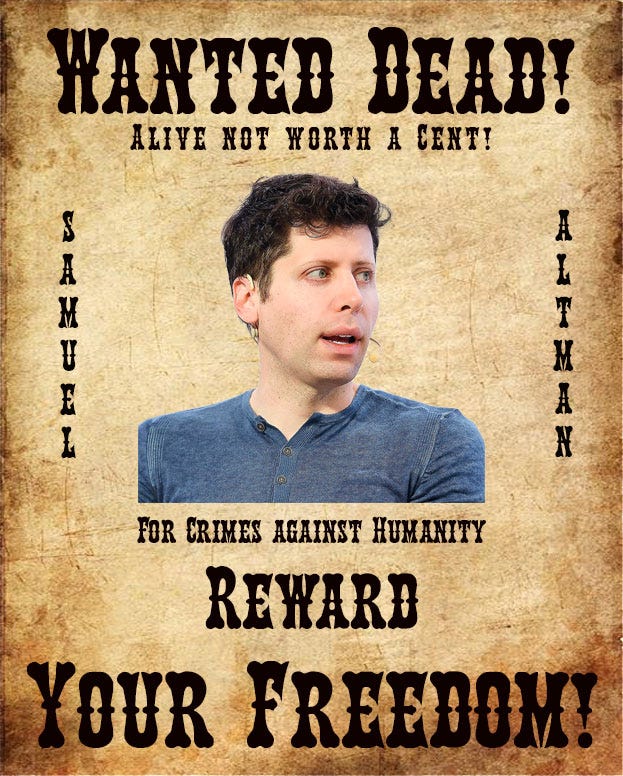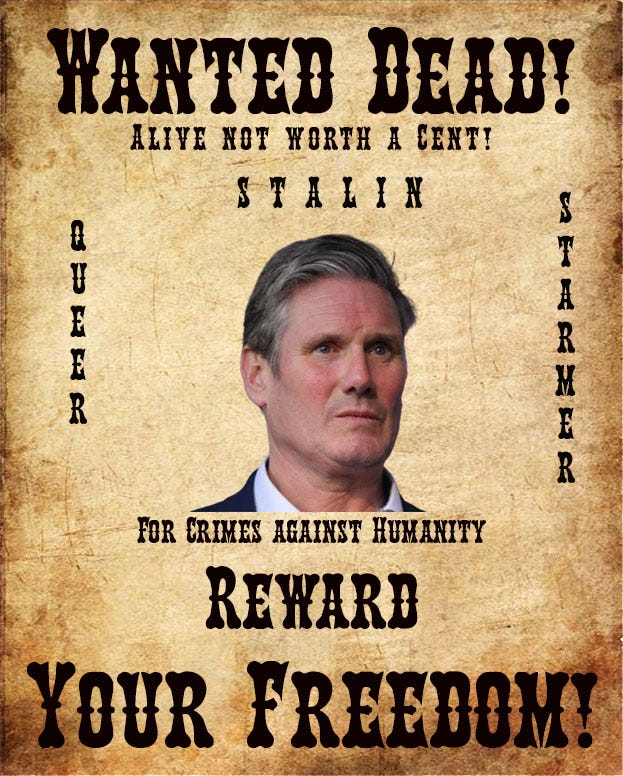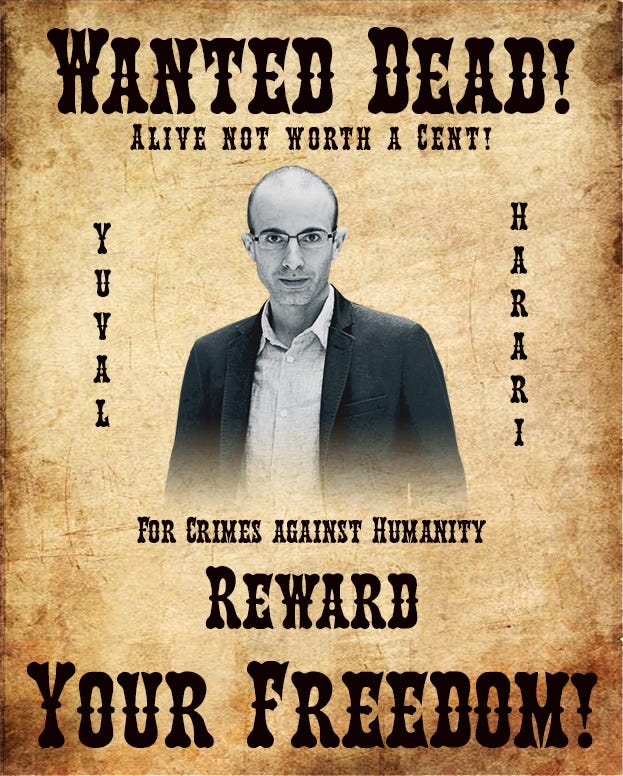Why the World Keeps Turning Against the Jews
I lately came across this Video:
Who are the Jews, really? What is their true role in history and in the purpose of life itself? Why has antisemitism persisted for millennia, and what solution does Kabbalah propose for it?
In this Kabbalah Explained Simply, join Alexander Zusin to explore the Kabbalistic view on Jewish identity, the purpose of creation, and how unity among the Jewish people holds the key to resolving antisemitism and guiding humanity to its ultimate goal.
Note:
To understand how stupid evil and deceptive them Jews are... just look at the wording of this statement... in fact look at the language wording and how any question is raised... it tells you a lot about the honesty integrity and sincerity of the Questioner... or the lack of:
Why has antisemitism persisted for millennia, and what solution does Kabbalah propose for it?
This is a completely insincere Question.
The answer is simple... the Kabbalah (from BAAL) teaches Jewish Supremacy and that is the core of the problem so the Kabbalah can never ever offer the solution to the problem it represents.
Selling cancer as the cure.
That is them Jews in a nutshell.
Always the victim.
“The disproportionate amount of wealth and power is the root of anti-semitism.”
I do agree with this statement... a statement from the ADL.
“At the core of this myth is the belief that Jews do not deserve power, regardless of values.
It also relies on claims of Jews controlling global affairs.”
https://antisemitism.adl.org/power/
I also agree that Jews do not deserve power over others because I never ever can trust a Jew because of the Kol Nidre.
And if you have too much power and too much money... money you know you have stolen just as you have stolen the land you live on...
Why don’t you give some back?
Now there is a simple answer to this and a deeper one.
First of all I take no sides but the side of Truth.
And that is the first problem for the Jews... the Kol Nidre.
The Jews simply worship the Lie that is so persistent that the Jews believe their own lies.
These people simply can’t be helped and I refuse to help them or to the extreme be ruled by any of them or their laws which only protect them.
We all should refuse to be ruled by Jews or Freemasons because the lot of them are arse sniffing liars.
Any Government Official that protects the Jews and their Lies should be shot dead... receive no pension... and their entire Family should be killed.
As recently as March 2018, a Washington D.C. city council member claimed that the Rothschild family was “controlling the climate to create natural disasters they can pay for to own the cities.”
Which they do... H.A.A.R.P.
They are behind AI.
And AI was the reason for Covid.
How to stop Anti-Semitism
Truth. If everyone speaks the truth and everyone is contend with the things they have, the Freedoms they enjoy and the company they keep... there is no need to lie.
There is only one Philosophy which can unite the world and this is the original philosophy of life... ZEN.
Everything good in Religion is copied from ZEN anyway.
And ZEN is the only philosophy that brings the best out in everyone.
Zen Anarchy & Freedom
Thanks for reading Fritz’s Freud! Subscribe for free to receive new posts and support my work.
Back to this guy Alexander Zusin and his Crocodile tear jerk.
This is from the Talmud:
The Talmud teaches: “If someone comes to kill you, rise to kill him first.”
“Since we know that the ‘other’ has indeed ‘come to kill you,’” the Rebbe explained in 1969, elucidating the Torah’s principle in the context of Israel’s position in the Middle East, “the Torah commands us to ‘rise early to kill him.’ The instruction is clear: Do not wait until the other comes to annihilate you. That could, G‑d forbid, already be too late. Rather one must ‘rise and kill him first.’”
https://www.chabad.org/library/article_cdo/aid/6932155/jewish/When-Jews-Rise-Like-Lions.htm
This extends to such an extreme that the Talmud allows (or demands) that the children of your enemies must be slain...
The Talmud (Sanhedrin 27b; see also Targum to Exodus 20:5) answers by noting a contradiction in the verses of the Torah itself. On the one hand, Exodus 34:7 states: “He visits the sins of the fathers on the sons…” On the other, Deuteronomy 24:16 states, “A man shall be put to death for his own sin.” The Talmud answers that when is a person punished for his forebears’ sins – when he follows in their footsteps. If the child learns better but willingly and consciously decides to continue in his parents’ wicked path, then he becomes obligated to rectify not only his own sins but the past family sins he took responsibility for by adopting as his own.
https://aish.com/children-punished-for-sins-of-parents/
And yes this is pre emptive striking... kill the children of your enemy before they find out what you did.
Minority report.
Pre emptive policing.
Via AI.
The Jews fear us all and as such are allowed (By their own idiotic Jewish Fascist Ideology) to kill us all because we would kill them when we find out what they have done against us.
Such as sterilizing Humanity through a planned fake pandemic and fake vaccines.
Only the People you Trust can hurt you
Protect yourself... don’t trust a Jew.
Only the People you Trust can hurt you
She walked to me naked, her arms around me I felt her breath and her skin, breathing in unison.
Why do the Jews have this intensive Bloodlust?
Bloodlust and paranoia make a bad Judge.
Paranoia feeds paranoia and fear feeds fear.
Imagine being a Jew and living inside this constant stain of paranoia and fear?
What do the Jews have to fear?
Only their own lies... and this can’t be cured.
If you don’t live by the Truth then you are not worth being called a Human.
And most definitely you ain’t grounded on a moral high ground mate!
And those people who live by lies and the resulting fear of exposing them... fear and paranoia... make way for the constant cover up corruption and Blackmail the Jews impose on the world.
It is a necessity because the Jews have this incurable need to Lie at every opportunity.
So much that the world is at a breaking point and this is down to the Jews and their constant need to cover their lies while try to lie us into another war to fulfill their self fulfilling prophecy.
For a very long time now I present the Bible not as a Historical book but a Future plan to create Armageddon and to wipe out the Human Race.
Jesus like Zelinsky are both Jewish Actors doing their part to fool the world.
The Freemasons and Jews play the role of the Devil in the scripture which ultimately leads to Armageddon... and they did for the last many thousands of years.
Their Order / goal is to lead the Nations into a perpetual War of self destruction and self annihilation.
It is a Religious Order... hence it is lead by fanatics... the Occult and their related Associates like the IMF WEF and the crazies who vouch for a world Government.
This is a Holy war... the mother of all wars and this is just the beginning.
All comes down to this.
It is not a Muslim war yet it is a Muslim war.
It is not a Christian war yet it is a Christian war.
It is a Jewish war yet it is not a Jewish war.
It is a Holy war... a war by deception.
It all comes down to this:
“Come, let Us go down and there confuse their language, so that they will not understand one another’s speech.”
- Genisis 11:7
The Grand connection here is Nimrod and the Tower of Babel.
You better know Nimrod as a Rothchild... they are the Nimrod Bloodline.... Solomon was one of them as was Adolf Hitler Jesus and Mohammad.
You might refer to them as “Fallen Angels” but I assure you there is nothing angelic about them.
They are the Devil himself... Angels Demons alike are Draco... Dragons... Fire Demons.
Born in the Fire of the Sun, the enemy within.
An Inconvenient Truth... Holy War
“The Third World War must be fomented by taking advantage of the differences caused by the “agentur” of the “Illuminati” between the political Zionists and the leaders of Islamic World. The war must be conducted in such a way that Islam (the Moslem Arabic World) and political Zionism (the State of Israel) mutually destroy each other. Meanwhile the other…
Jews are Aliens from another Dimension - Rabbi Laitman
Yes the same Rabbi Laitman who is Alexander Zusin’s Mentor and Chief.
The enemy within
It has always been that way but never as extreme as it is now... but this thirst for control... combined with the schizophrenia of being the world’s messiah... with an impossible impostor attitude of leading the world into a one world Dictatorship... while giving us not even an inch of freedom.
All based on the Lie that is Religion and the control of Money.
This is why people hate Jews and frankly I can’t blame them.
I blame the Jews because after all this time they are jerking off using the same old lies crocodile tears and have not learned to live in peace with others.
You only have to blame yourselves... and that the Jews refuse to do... always the Victim...
When it is proven beyond doubt from the beginning of conflict that the Jews have always been at the center of conflict they sought to divide and conquer the holy realm... our world.
Today’s wars in Ukraine and Gaza only exist because of the Jews who created them... from Lindsay Graham to Zelinsky... Barbara Nuland to Adam Schiff.... Igor Kolomoisky to Satan the Yahoo.
Conflict and creating conflict supporting both sides has always been at the heart of the Jewish Business Model mafia style.
They do so with Christianity and Islam which they both created and control and use to create wars to make profit from destruction.
Wars they created and the Media they control to cover up for their Jewish Crimes against Humanity.
By their own admission.
And people create a natural resistance against Jewish Lies and Jewish Supremacy.
A Jewish Supremacy the Kabalah teaches.
Jews have to rise... and control... all of the Nations they call Goyim.
What if we don’t like your control?
What if the Goyim don’t like your teachings because they understand that all them Jews tell you is a Lie?.
Wars Famine Pestilence... created in Laboratories controlled by the Jews.
The four whores of the Apocalypse... all Jewish whores.
Ursula von der Leyen: A Female Adolf worse than Hitler
Let me get this straight: Ursula von der Leyen is a failure... a walking Abortion.
The Jews want to create the Third Temple on the grounds of the Al-Aqsa Mosque which will undoubtedly create WW3.
And we know that you want... so stop it.
But the Temple is already been built.
So they create a scenario wherein there is no opposition.
They do so in politics where there really is no opposition to Jewish Fascism.
They do so using the Media to cover up for their evil intention and their Lies.
And they are doing this forever since Babylon or Babel...
Martin Luther wrote over 500 years about this... the Jews and their Lies... and every word he wrote then holds true till today!
Was Martin Luther right?
Anti-Semitism... been accused of many times... as are many others.
Even Glen Greenwald and Prof. John Mearsheimer agree: “Israel is in DESPERATE STRAITS”
The Genocidal Holocaust in Gaza cannot be denied and the line has been drawn.
Adolf Hitler himself has created a line which no Government must be allowed to cross.
This line is a Historical line on which we the Human Gentile Race must rise up and slaughter those who have crossed that line... or even approach it.
And no lie will be accepted to ever cross this line again.
By no one no Organization and no Ideology.
No... History must never be allowed to repeat itself.
The Jews follow their own plan for Armageddon.
A Plan they have written in the Bible to deceive the stupid believers:
And ye shall hear of wars and rumours of wars: see that ye be not troubled: for all these things must come to pass, but the end is not yet.
For nation shall rise against nation, and kingdom against kingdom: and there shall be famines, and pestilences, and earthquakes, in divers places.
All these are the beginning of sorrows.
Then shall they deliver you up to be afflicted, and shall kill you: and ye shall be hated of all nations for my name’s sake.
And then shall many be offended, and shall betray one another, and shall hate one another.
And many false prophets shall rise, and shall deceive many.
- Bible Matthew 24
It follows the Blueprint of the elders of Zion... the Talmud... and the long standing Jewish Plan for Armageddon.
Note:
The Kabbalah center and Alexander Zusin are students of Rabbi Laitman who told us all Jews are Aliens from another dimension.
So he is lying deliberately because he knows Jews are there to prepare us for an Alien Invasion... an Alien Invasion of the Mind because the Jews are from another Dimension without a physical body.
And the Jews are insane... totally insane.
They try to hide their Lies by invoking a new kind of Fascism... one they always invoked over time by controlling Kings creating wars and controlling the Media.
Freedom is a thorn in the eyes of these extremely dangerous vile deceptive lying scumbags.
Their intention is evil... to the core.
There is nothing good about them Jews
If there were they could be honest... but they can’t... the Jews are a bad bunch and the Israelis are worse... they are pure Jewish Nationalistic Supremacists who believe they own the world.... and everyone is just a slave to the Jews.
They are worse than the Nazis!
And to keep this illusion alive they have to control all of the Media to hide their lies from the past and cover up their future crimes.
And they think they can do this... they are totally insane.
Yet they try... but most prominent... they try to deny the fact that them Jews control all of the Media and are behind the Digital ID to control all and everyone.
Thrice insane and infinitely stupid.
Now the Jewish plan of controlling all of Humanity via a microchip is as old as Babylon and the Tower of Babel where that came from.
AND it is written in the Bible aka the “Mark of the Beast“.
There is no way them Jews can lie their way out of this.
Plan meets action and actions verify the plan.
You had it!
And them Jews are murdering scum... they killed Charlie Kirk Aaron Russo and so many more.
Here is what Matt Gaetz has to say about that
As I wrote some five years ago they created Covid to lie the world into a permanent locator (Neural Lace) through the scam vaccines... the “Mark of the Beast“.
Klaus Schwab DARPA Harvard Elon Musk and the coming AI war
This picture is taken from the Harvard Wyss Foundation outlining the capabilities of Nanotechnology in a world that is out of balance and out of control, a world of their making by design not coincidence.
And now they are doing this to every device... it is called “Device ID”.
Notice... this is the same Guy... Jeffry Epstein’s Friend... Bill Gates... who I pray for will be shot to kill the sooner the better.
The same Guy who poisons our food...
The same guy behind Covid and the “next Plandemic“...
The same guy with all his Jewish friends behind AI...
Forcing a Microsoft Digital ID upon all...
In fact stealing the new computer you just bought before you bought it...
Making you an inmate of the new Auschwitz.
I oppose the Digital ID / Auschwitz ID and all those who support it
To all Politicians & to whom it may concern
Of course Bill Gates is a Jew...
And a friend of Donald Trump who is also a Jew.
And Bill Gates deserves the Death Penalty a million times and more... plus the future crimes he and his Cabal of Jewish Fascist Supremacist slime try to invoke upon us all.
Lying with Statistics.
Yet trying to control everyone and everything... not to keep us safe but to keep us enslaved.
Fulfilling the long standing Jewish self written prophecy of Jewish world domination.
Bill Gates must die.
To control all of the world through AI.
Not just through Microsoft but all phones.
Apcloud Israeli Spy ware on phone
And all cars Internet Service providers... you name it they control it!
Israel's Unit 8200 Alumina & the Global Spy Network
This is a must see documentary about Unit 8200.
Insider trading comes natural to the Jews who see us not as their equal but as their slaves.
Donald Trump and Baron trump both Jews are exactly like the Biden Mafia Family.
Baron Trump just made 80 Million in Crypto after Donald Trump invoking 100% tariffs on China.
Just like 9/11 when the Jews shortened US Airlines stock.
Same method here... Insider trading... quick buck... always them Jews.
$19 billion gone: The largest liquidation in history
The U.S. President Donald Trump’s sudden announcement of a 100% tariff on Chinese imports of “critical software” blindsided global markets. Stocks reeled, tech indices fell sharply, and cryptocurrencies, always sensitive to external shocks, imploded.
Within minutes, Bitcoin’s price dropped from above $120,000 to nearly $105,000. On some exchanges, it briefly touched $101,000, triggering automated sell orders and wiping out billions in leveraged bets. Ethereum, Solana, and XRP followed suit, collapsing in double-digit percentages within an hour.
This wasn’t just market volatility; it was a liquidity crisis — the largest the crypto world had ever seen.
As the market fell, a chain reaction unfolded. Margin calls triggered forced liquidations, which in turn triggered more margin calls. Exchanges could not keep up.
https://www.cryptotimes.io/2025/10/13/the-9-11-of-the-crypto-market-the-october-10-crash/
According to crypto analytics platforms, a large Bitcoin short position opened on the Hyperliquid exchange between October 9-11, 2025, was activated just before Trump’s tariff announcement. The transaction’s profit is estimated to be approximately $78-$88 million. This situation has sparked allegations of “insider trading” in the markets.
Meanwhile, Forbes and other sources have suggested that Barron Trump has earned approximately $80 million from crypto investments through his family’s World Liberty Financial project. While these earnings allegedly bring Barron’s total wealth to $150 million, there is no official confirmation or direct evidence.
There is no smoke without fire... and Baron trump is the new Hunter Biden.
They are all one big Mafia.
A Jewish Mafia that want AI to control us because their power is fading.
And then they dare to speak about Anti-Semitism... scum... the lot!
Jews control the Drug trade since the Opium Wars.
To understand the Jewish Anti Human mind we have a look into the mind of the Sackler Family who killed millions of American Citizens and after they were found out filed for bankruptcy.
That is the Jewish Mind set for profit by killing us.
Killing Depopulation Drugs and Strilization...
And this invokes the need for total control over each and everybody at all times.
So in simple terms the Jews make profit from us then charge us twice and demand that we are grateful to that scum.
Thrice insane them lot.
At the same time they try to involve us into war after war... Depopulation 101.
And selling it to you as prophecy...
Pope Leo gifted white horse named ‘Proton’
https://www.americamagazine.org/news/2025/10/15/poland-pope-leo-arabian-gift-horse/
The leading horse is white,
the second horse is red,
the third one is a black,
the last one is a green.
The phrase “the leading horse is white” refers to the first of the Four Horsemen of the Apocalypse, symbolizing conquest or victory, as described in the Book of Revelation.
The Pope receiving a white Horse is a Symbolism which must not be underestimated.
It is the conquest of Humanity through Religion... a spiritual conquest by the Jews who control Religion.
And it will usher in a series of consequences... actions... flase flags... according to the scripture made to happen by Jews and Freemasons who are the Devil in the Bible.
I write about this forever.
The Bible is a book of prophecy... for the Jews to conquer the world... and for the Christians waiting for the Antichrist to be destroyed.
Problem is... the Truth will always reveal itself.
And the Jews have written in their own prophecy from Albert Pike that they intent to usher in three World Wars to conquer all of Humanity.
Just as I told that the destruction of the Georgia Guidestones was a sign for them to go full in...
This picture with the Pope and a white Horse is also a sign for things to come... predictive programming... following the scripture of an unholy prophecy.
Israel Exposed Funding 150M Tons Of ‘Mood-Altering’ Chemtrails Sprayed on US Cities
Behind closed doors, Robert F. Kennedy Jr.’s Chemtrails Task Force has dropped a quiet but devastating bombshell.
Despite growing public outrage, the spraying hasn’t stopped and U.S. taxpayers are unknowingly funding it, with millions of dollars flowing out every single day.
But one discovery froze investigators in their tracks - a foreign intelligence partner, officially an ally, secretly bankrolling what internal memos describe as psychological operations targeting U.S. citizens.
https://x.com/tpvsean/status/1978171985973698789
Of course they need to buy and control both sides of the aisle.
So that their involvement in 9/11 JFK Covid and the Charlie Kirk murder don’t come up.
Google Releases Proof Israel Worked With TPUSA To Assassinate Charlie Kirk
And create false Flag events & color revolutions so that the Idiots believe that conflict is normal.
And all happens accordingly... it ain’t.
Jews Been Busy in Latin America
Fact:
The Jews know all is a Lie to stir us into a totalitarian Dystopia of total control.
And they are playing their part knowing (and hoping) for them to own 2800 slaves.
Which is not possible in a Free World.
This is why Jews never speak of Freedom or peace.
Only if it suits them… never others.
They always demand and never givs.
And always want to control.
Fun Fact:
What is the difference between a Coconut and a Jew?
You get a drink out of a Coconut.
Larry Ellisson
Larry Ellisson is a pure Jew.
He made his money by controlling others and working for the Mossad / CIA.
His latest move reeks of desperation.
Buying Tic Toc because people on Tic Toc wising up against Jewish Supremacy.
Oracle billionaire Larry Ellison is building a media empire, with stakes in TikTok, CBS, CNN and more
Ellison family moves from software to media with TikTok, Warner and Paramount stakes
Larry Ellisson is also a stern Nazi... speaking like a true Fascist... and acting like a true Nazi.
Threatening to force people into submission... role reversed.
And he admits using AI as a totalitarian enforced control.
That is Project Stargate.
This is why the Jews invented Covid.
MK Ultra Covid-19 Unit8200 Israel and the coordinated Madness that is coming
And I don't want you and I don't need you
To hand over all of Humanity to AI as the sacrificial Lamb.
AI War Chronicles: Understanding the Threat
Scholars have hailed artificial intelligence (AI) technology as the basis for a ‘fourth industrial revolution’ (Schwab 2016) – a general purpose technology predicted to bring productivity gains, drive economic growth, and transform the world in which we live.
The Jews build things backwards... STARLINK NEURAL LACE...Robotics...
The last piece is the Digital ID... it is the capstone.
If this fails all will fail and I hope they fail.
I make them fail.
ICE Raids Clearing The Path For MASS SURVEILLANCE!
When the folks at the CIA funded Google Oracle Facebook YouTube and so on they were thinking big.
That also reverts back to Hollywood and the Jewish Fascists there... because they are the CIA Coconut Incest Slime.
Star Trek used AI in their films... and HAL the Computer in Space Odyssey... the most boring film ever... was AI that turned against Humanity.
HAL... if you shift the letters by one becomes IBM.
IBM worked together with the Nazis which kind of is happening now turning against Humanity... and that is what AI is.. the endgame.
So no wonder why IBM and them other Jewish Nazis want us to be controlled via Digital ID.
AI is a closed System with data input a Master Control Program at its core... something I usually refer to as the AI Mainframe... and data output which by an MCP is control.
Because in the end there is no difference between the old way of computing using terminals and a Mainframe... to when the PC Revolution started.
Funny enough... Apple and Steve Jobs saw the PC as a Bike for the Brain... which it was... accelerating Human capabilities... which I am grateful to.
But then Apple invented the Iphone which was good at first but is now a tool for oppression used for mass surveillance and total control.
So control is the output of AI and in the Internet of everything where everything and everyone is connected that is total control in a totalitarian state where Humanity don’t exist anymore.
In the end everything and everyone will be just an Input terminal for AI which control everything.
That is their vision... same as the Nazis which were supported by IBM.
AI is a complete Infrastructure that includes STARLINK 5G 6G 7G Siri Alexa Microsoft IP Cameras IP Toys Baby monitors Smart Ring Cameras Smartphones Banking Amazon Facebook Apple Nvidia Bitcoin every CPU on the Market DATACENTERS SENSORS Surveillance technology and ultimately Robotics and Weapons.
AI feeds off the Human Race like a Parasite because that is what AI is... a Parasite that feeds off Humanity... like the Jews who created it.
AI War Chronicles: Understanding the Threat
Scholars have hailed artificial intelligence (AI) technology as the basis for a ‘fourth industrial revolution’ (Schwab 2016) – a general purpose technology predicted to bring productivity gains, drive economic growth, and transform the world in which we live.
And this is their final Solution.
Here is what David Cameron says...
Which I describe here in the Plan of Henry Kissinger and Eric Schmidt...
Mutual Assured AI Malfunction
And the Digital ID is the capstone and must be opposed at any costs.
John o’ looney
The Digital ID is a crime against Humanity using Nazi Ideology Nazi Technology and Jewish Supremacy.
The whole Idea of a Government and one world Governent is born out of Jewish Supremacy Fascism and Racism.
The Jews believe we are Gods mistake and that they the Jews gain Immortality when they disrupt our advancement and further Human enslavement.,
It is a Government of God with them Jews playing God over us as they see themselves as Gods chosen people.
This is the only Reason them Jews are so well protected because anyone working for the Government has to sign a pact with the Devil... the Jews... literally.
CIA MOSSAD POLITICS... the Devil... the Jews... refer to an Alien Race preparing Humanity for an Alien Invasion of the mind that cannot be seen because they cannot be seen... only felt.
And this is another reason they try to destroy Human capability and Human Emotion.
Because Emotional Intelligence is the highest form of Intelligence.
Why are Jews pushing Nazi Technology and Nazi Ideology?
The above picture is Concentration camp identification by the Nazis aka Social Credit Score 1933.
Note:
Sam Altman killed a man because he revealed the same... that AI is basically feeding on Humanity to be able to mimic Humanity.
Them Jews only like what they can control and live in permanent fear of being exposed because they only lie.
And they are building around us a Prison Planet... planet Auschwitz.
Their names are:
Bill Gates Elon Musk Sam Altman Peter Thiel Eric Schmidt Palmer Luckey Mark Zuckerberg Larry Ellisson Alex Karp working with Donald Trump and the Zionazi establishment.
Sam Altman Responds to Murder Accusations
Note:
I don’t buy it.
AI is designed for a world controlled by Machines…
These people do anything and most definitely murder People who get in their way.
The Jewish Curse: Groupthink and Mass Manipulation
To understand the Jews and take down their power we must understand how they work.
Gavin Newsom
See his reaction when asked about AIPAC
And he is best mates with Blue Dress Bill Clinton.
Gov. Gavin Newsom says he will sign AI regulation in interview with Bill Clinton
Gov. Gavin Newsom said Wednesday that he will sign a bill by Sen. Scott Wiener, D-San Francisco, to regulate artificial intelligence, making California the first state to put guardrails on the burgeoning technology.
Newsom made the announcement during an interview with Bill Clinton at the former president’s Clinton Global Initiative conference in New York, calling California an “innovator in the absence of federal leadership” when it comes to regulating AI.
“As a consequence of having so much leadership residing in such a concentrated place, California, we have a sense of responsibility and accountability to lead, so we support risk-taking, but not recklessness,” Newsom said, referring to a plethora of AI companies in Silicon Valley. “We have a bill on my desk that we think strikes the right balance, and we worked with industry, but we didn’t submit to industry.”
Note:
Gavin Newsom and Bill Clinton are two perverted Jews.
And Jews Lie always.
Proof?
The AI Abuse Prevention Act written by me...
Artificial Intelligence Abuse Prevention Act
Universal Declaration of Human Rights (1948) :
It covers all the necessities down to the most important fact... I own my Data.
And this fundamental Truth... I create and own my Data... is the most important one.
And it is the only one ensuring AI abuse prevention... hence the name.
Their Bill is a lie drawn up by a Gay bloke.
It wishy washes the argument and promises regulations... yet the regulators are the same...
It is a lie... but what can you expect from a Clinton friend.
Senator Scott Wiener Goes To Folsom & Shows Off Incredible Physique
The senator obviously wore some leather to attend the Folsom Street Fair in San Francisco.
https://www.pride.com/politics/scott-wiener-folsom-leather-pictures#rebelltitem1
Speaking of a Clinton Friend...
Tony Blair Held Meeting With Jeffrey Epstein as Prime Minister.
Never forget that by examination of the case surrounding Dr. David Kelly... it was Tony Blair who I accuse of murdering Dr. David Kelly.
The cronies who saved Tony Blair’s skin after the suspicious death of weapons inspector Dr David Kelly are back as Keir Starmer’s Mr Fixits, writes GLEN OWEN
Dr David Kelly was seen alive for the last time, when he left his Oxfordshire home to take an innocent-seeming afternoon walk.
The body of the Government weapons expert was found in nearby woods at 9.20am the next day; his left wrist had been cut open, and an empty pack of painkilling tablets was sitting in his jacket pocket.
His assumed suicide – a week after he had been outed by Tony Blair’s administration as the source of a BBC story claiming that a No 10 dossier on Saddam Hussein’s weapons capacity had been ‘sexed up’ to justify the war in Iraq – brought the Prime Minister to the brink of political extinction.
Mr Blair’s survival was effectively ‘fixed’ by his Praetorian Guard: Peter Mandelson, Alastair Campbell and Lord Falconer – all of whom remain influential figures, preparing for what they hope will be a new Labour Government under Sir Keir Starmer.
Tony Blair is Fabian Society and a Freemason.
Peter Mandelson is from Oxford’s Skull & Bones... the Bullington Club.
And both are connected to the Israeli Mossad through Epstein
UK sacks U.S. Ambassador Peter Mandelson over Epstein links
https://www.cnbc.com/2025/09/11/uk-sacks-mandelson-as-us-ambassador-over-epstein-links.html
All that refers back to the Jews and their wanting World Domination.
Here is Donald Trump admitting treason.
So why does the World keep turning against them Jews?
Because Jews have created every disease from the Plague to Covid in their Laboratories and called it Witchcraft.
They are behind every war...
They corrupt every Parlaiarment...
Corrupt every Politician...
Are behind Child trafficking and Ritual Murders...
And they lie about it so bluntly we should hang the lot.
Here is Agenda 2030
Note:
Agenda 2030 never needed to be because I foun the Solution 20 years ago and I live to tell you lot about it.
Creating a Problem for a Solution I found 20 Years ago
This is a film about the future
Yet them Jews try to flog us a dead horse.
Al Gore’s Startup Tracks Fossil Fuel Emissions By Satellite and AI
Al Gore is a Technocrat and a former member of the Trilateral Commission, who incessantly pushes climate change and the destruction of fossil fuels. His startup non-profit applies AI, satellite images, and ground sensors to track methane polluters. There is no way to track CO2, so he figures methane is just as good. The fact is that methane has a life of seven to twelve years when released as a gas into the atmosphere. Nevertheless, Gore is setting up this massive surveillance system to punish the “evil-doing” polluters.
https://www.technocracy.news/al-gores-startup-tracks-fossil-fuel-emissions-by-satellite-and-ai/
Al Gore or Al the whore as he is known to his friends (I am kidding… Al the whore has no friends)…
He… like all Jews is lying through his mothers teeth flogging a dead horse.
When all of this is unnecessary and completely out of date.
I SOLVED THE$E PROBLEMS.
But the only problem left are these Jews who can’t match my solutions because they don’t want to solve our problems.
And they are caught in the act by me who is the only person to offer solutions and as such confront them Jews and their lies head on.
I dare anyone to debate me on this… no takers I suppose… COWARDS THE LOT OF YOU!
Yet them Jews are so evil they believe it is their right to kill us.
It ain’t.
Eye for an eye...
The fate of this world and the Future for humanity are my personal goals and you lot... the Jews... do anything and everything in this world to create conflict and WW3.
That is all they care about.
They divide and conquer like an Alien race tries to conquer Earth.
This gets personal.
You lot trespassed on my property.
Cursed you are... and cursed thy will be.
I cursed thee...
The Jewish Curse: Groupthink and Mass Manipulation
To understand the Jews and take down their power we must understand how they work.
If you take them Jews out of the equation there would be no Covid... no AI... no War.
The people of this world would come together in peace and learn from one another.
All problems would be solved.
And we have a brighter future than ever.
Free energy from water.
No Pollution.
Free education.
Interstellar Space travel.
So the problem is Identified... it is them Jews.
Identified by their actions which are all actions against Humanity.
And it is all down to their actions.
No one hates the Jews for existing.
But everyone hates their actions which are always against Humanity.
And their actions are driven by racial superiority and Religious indoctrinated Supremacist.
Just like the Nazis before them... who also were Jews.
The Truth reveals itself and it can’t be stopped.
I certainly won’t stop because it interferes with my dream of a world living in peace Harmony and we as a Human Race taking our rightful place among the Stars.
Herzliya Israel is a significant hub for artificial intelligence research and development, particularly with teams from major companies like Microsoft and Apple. These teams focus on advancing AI technologies and applications, contributing to innovations in various fields such as cloud computing and machine learning.
Israel’s aim is to become a “powerhouse” in the field of Artificial Intelligence, Maj. Gen. (res.) Eyal Zamir, director general of the Defense Ministry, said at the 2023 Herzliya Conference on Monday. “Our mission is to transform Israel into an AI powerhouse.
https://www.jns.org/israel/artificial-intelligence/23/5/22/289859/
A dishonest Question answered Honestly.
AI is predominately Jewish feeding off the Human population… like an automated Parasite.
Inheriting the Jewish Gene…
Stealing not just our money land and planet but AI is stealing our thoughts.
Jewish thought control automated.
That is what AI really is…
Stealing our dreams.
That is why nobody likes kikes… because they ain’t Human.
And them Jews still believe they can buy all the Media and control us…
Sad shitfuck’s them lot.
Can Pro-Israel Billionaires Succeed by Buying More US Media Platforms?
Glenn Greenwald
Note:
The Jews try to buy all of the Media.
And these are the same lot who are behind AI.
Larry Ellisson Peter Thiel Jeff Bezos Sam Altman Bill Gates Elon Musk Mark Zuckerberg Eric Schmidt.
Trying to buy your Opinion while putting you all into the AI cage!
And people like me are a thorn in their side… we are powerful… and the tide is turning.
Keep it up.
You MUST watch this!
The Danger of Seeing What Others Don’t - Alan Watts
Fun Fact:
The pro-Palestinian Handala hacking group has revealed the details of 15 Israeli “criminals” who are involved in different areas of the military industry.
A group of pro-Palestinian hackers has disclosed the identities of 15 Israeli “criminals” active in the regime’s military industry, exposing ongoing security vulnerabilities in the regime.
Prove me wrong you only prove me right.
Godspeed
Fritz Freud
If you can...
are well off enough...
and like my work please consider buying me a coffee...
There is a lot of work going into this.
Thank you.
This Blog has been under attack for some time.
As such please share this information as far as you can.
Anywhere you can.
Thank you
Thanks for reading Fritz’s Freud! This post is public so feel free to share it.









